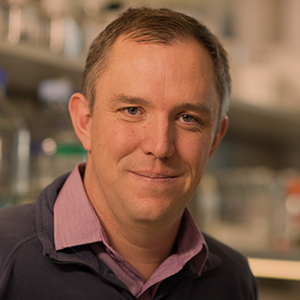
Andrew Carter
I studied Biochemistry at the University of Oxford where I first became interested in structural biology. In 1999 I moved to Cambridge to start a PhD with Venki Ramakrishnan, at the MRC Lab of Molecular Biology (LMB). I was part of his team that solved the X-ray crystal structure of the ribosomal small (30S) subunit and showed how it bound antibiotics. In 2003 I moved to Ron Vale’s lab, at the University of California, San Francisco, where I used X-ray crystallography and single molecule fluorescence microscopy to study the mechanism of the microtubule motor protein cytoplasmic dynein. In 2010 I returned to the LMB to set up my own lab. We solved X-ray crystal structures of the dynein motor domain which revealed how it generates force to pull cargos along microtubules. In 2015 we used cryo-electron microscopy to solve structures of the dynein-cofactor dynactin and showed how it binds dynein. We currently use a combination of crystallography, electron microscopy, and single molecule microscopy assays to ask how the 1.4MDa dynein/dynactin machine interacts with cargos and regulators.
- Urnavicius L, Lau CK, Elshenawy MM, Morales-Rios E, Motz C, Yildiz A, Carter AP (2018) Cryo-EM shows how dynactin recruits two dyneins for faster movement. Nature (In press)
- Zhang K., Foster H.E., Rondelet A., Lacey S.E., Bahi-Buisson N., Bird A.W., Carter A.P. (2017) Cryo-EM Reveals How Human Cytoplasmic Dynein Is Auto-inhibited and Activated. Cell 169(7):1303-1314
- Urnavicius, L., Zhang, K., Diamant, A.G., Motz, C., Schlager, M.A., Yu, M., Patel, N.A., Robinson, C.V. and Carter, A.P. (2015) The structure of the dynactin complex and its interaction with dynein. Science 347: 1441-1446
- Schmidt, H., Zalyte, R., Urnavicius, L. and Carter, A.P. (2015) Structure of human cytoplasmic dynein-2 primed for its power stroke. Nature 518: 435-438